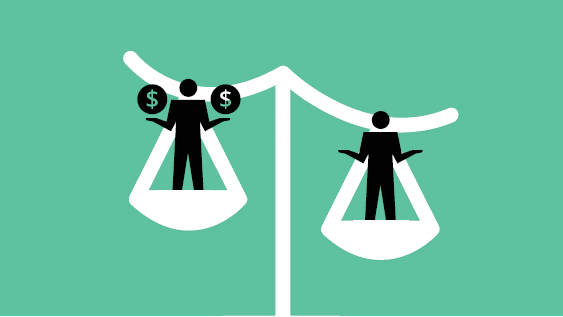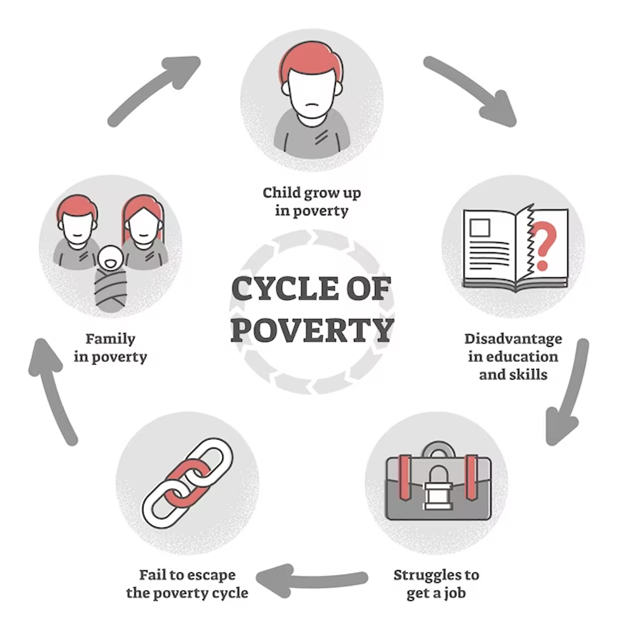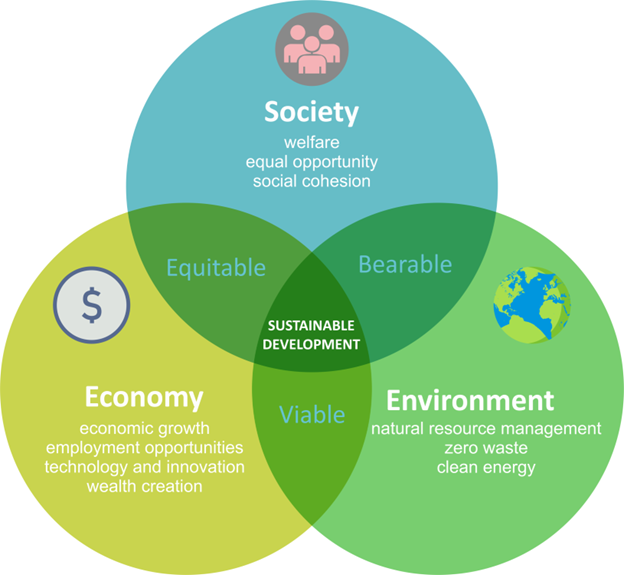From Poverty to Prosperity: Uniting Economic Growth and Population Stability
Even in this modern age marked by extraordinary advances in technology and the well-being of countless individuals worldwide, the reality of poverty persists as a grim undercurrent in far too many communities.
This stark imbalance in wealth and opportunities fuels an unsustainable cycle of poor health, inadequate education, and limited economic growth, making it increasingly challenging for impoverished societies to break free from the constricting grip of poverty.
It’s time to reshape the narrative from poverty to prosperity, exploring innovative approaches that balance economic growth and population stability.
In this article, we delve into the intricate nexus between these two elements and how their synergy can significantly contribute towards poverty eradication. Read on to gain a deeper understanding of this multifaceted issue.

Source
Setting the Scene: Touching the Unsustainable Cycle of Poverty
Poverty is not a one-dimensional issue; rather, it is a daunting cycle perpetuated by an amalgamation of socioeconomic factors such as poor health, inadequate education, and restricted access to opportunities – all resulting in limited economic growth.
Understanding this devastating cycle is the first step in redirecting the path from poverty to prosperity.

Source
A Quick Look at the Statistics
To fully appreciate the magnitude of the poverty problem and the complexity of the interplay between economic growth and population stability, it helps to ground our discussion in some hard statistics:
- Global Poverty: A Snapshot: According to the World Bank, as of 2020, roughly 9.2% of the world’s population, or nearly 700 million people, live in extreme poverty, with less than $1.90 per day. This alarming number reflects the grim reality of those caught up in the relentless cycle of poverty.
- Education and Poverty: UNESCO highlights that 258 million children and youth were out of school in 2018. The absence of education hinders chances of upliftment and perpetuates the cycle of poverty across generations.
- Population Growth and Its Impact: The United Nations projection estimates that the world population will rise from 7.8 billion currently to 9.7 billion by 2050. Fast-growing populations in the poorest countries present additional challenges for poverty reduction, potentially overwhelming existing infrastructures and services.
- Economic Growth Rates and Poverty: The World Bank states that consistent high growth rates played a crucial role in reducing poverty in East Asia. Meeting similar sustained growth rates elsewhere could significantly impact poverty levels and facilitate shifts toward widespread prosperity.
This statistical overview reinforces the wake-up call that comprehending the intricate balance between population stability and economic growth is vital for challenging poverty’s continuous hold and moving further along the path toward global prosperity.
Decoding Economic Growth: Its Crucial Role in Alleviating Poverty
Economic growth has long been regarded as a prime factor in poverty reduction. It creates wealth, provides employment opportunities, and improves living standards.
But the real question that underpins our discussion is how to stimulate and sustain it to ensure that the benefits reach all corners of society, particularly the most vulnerable?
Understanding the Equation: Population Stability and Its Importance
Population stability refers to achieving a balance where the number of inhabitants within a society is sustainable for the available resources. Exploring this critical element opens another avenue for understanding poverty.
High fertility rates, especially in desperate situations, can strain resources, making it essential to incorporate population management in our strategies against poverty.
Is Overpopulation A Hurdle to Economic Growth and Population Stability?
Overpopulation presents a pernicious challenge to both economic growth and population stability.
In an overpopulated scenario, resources are stretched thin, infrastructure is strained, and the job market becomes saturated, leading to unemployment and underemployment.
These conditions curtail economic progression, create instability, and perpetuate a cycle of poverty, making it significantly harder for populations to achieve a sustainable and balanced life.
How to Address Overpopulation?
The solutions for overpopulation include population management strategies such as family planning and education that contributes to both economic growth and stability.
By limiting population growth, the pressure on resources is reduced, making for healthier environments, stronger economies, and more equitable societies.
In essence, managing overpopulation is a critical component of the journey from poverty to prosperity.

Source
Merging Economic Growth and Population Stability
The dual-approach of uniting economic growth strategies and population stability policies is a powerhouse for propelling societies from poverty into prosperity.
Harnessing the benefits of economic growth while managing population dynamics can create an environment that fosters equitable development and lasting positive change.
Tangible strategies, such as investment in quality education, reproductive health services, and fair economic policies, can make this great marriage work.
Let’s take a closer look at the strategies that can reshape societies and steer them toward prosperity:
- Investment in Quality Education: Comprehensive, inclusive and quality education is instrumental in breaking the cycle of poverty. It fosters innovation, empowers individuals, and gears them towards fulfilling employment, substantially contributing to economic growth. Moreover, education is pivotal in imparting knowledge about family planning, thereby managing population growth.
- Reproductive Health Services: Accessibility to reproductive health services directly contributes to population stability. By offering comprehensive family planning services, the fertility rate can be controlled, leading to slower population growth that aligns better with available resources and contributes to better health and living standards.
- Fair Economic Policies: Underpinning economic growth are fair economic policies that ensure equitable distribution of wealth. Policies that favor job creation, fair wages, social protection, and economic inclusion can propel economic growth while reducing income inequality.
- Infrastructure Development: Investing in infrastructure like roads, hospitals, schools, and housing contributes to economic growth and improves living standards. Proper infrastructure promotes businesses, enhances accessibility to services, and paves the way for an improved quality of life.
- Environmental Policies: Population stability extends to balancing the population with environmental capacity. Implementing strict environmental policies promote sustainable living, preserving resources for future generations and indirectly controlling population growth by promoting awareness and responsibility.
Final Thoughts
As we look toward the future, focusing on long-term, sustainable practices is imperative. Understanding how to balance sustained economic growth with population stabilization can alter the trajectory for millions living in poverty and pave the way for a future defined by prosperity.
FAQs
Q: What does population stability mean?
Population stability refers to achieving a balance where the number of inhabitants within a society is sustainable for the resources available.
Q: How does economic growth contribute to poverty reduction?
Economic growth creates wealth, provides employment opportunities, and improves living standards, serving as a core solution to reduce poverty.
Q: Why is overpopulation a challenge to economic growth and population stability?
Overpopulation strains infrastructure and resources, creates unemployment due to a saturated job market, and fosters instability and poverty.
Q: How can education help in achieving population stability?
Quality education imparts knowledge about family planning, reproductive health, and responsible living, helping control the fertility rate and achieve population stability.
Q: What role do fair economic policies play in achieving economic growth?
Fair economic policies ensure wealth distribution, create job opportunities, facilitate fair wages, and thus, play a crucial role in stimulating and sustaining economic growth.
Q: How do environmental policies promote population stability?
Environmental policies promote sustainable living and resource preservation, creating awareness and responsibility around population growth and its impact on the environment, ultimately contributing to population stability.


















